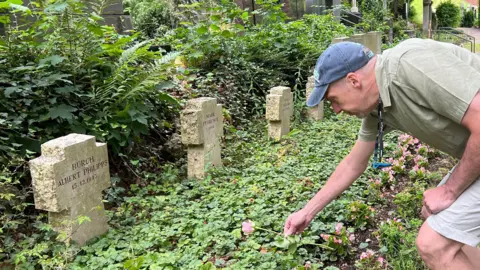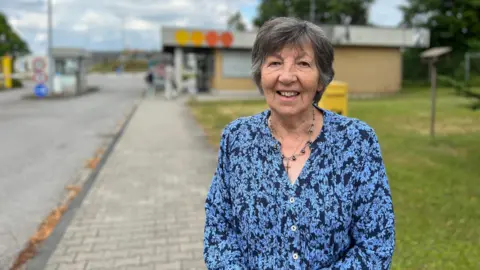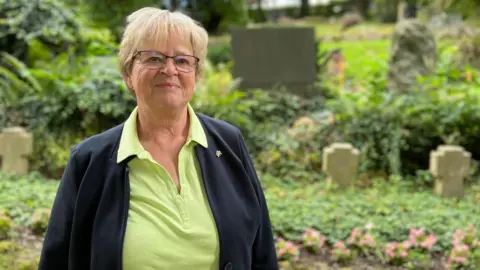Remembering Channel Islanders who died at Biberach
 BBC
BBCPeople from Jersey have visited the graves of Channel Islanders who died in the internment camp in Biberach, in Germany.
More than 2,000 people were deported from Jersey and Guernsey in 1942 and services are being held to mark the 80th anniversary of their liberation.
They were taken to Camp Lindele, where about 1,000 people, most from Guernsey, remained while others were sent to places like Bad Wurzach.
The site of the camp has been knocked down and only a police training academy remains. Those on the visit were shown an exhibition on its history and taken to a cemetery where those who died in the camp were buried.

Sylvia Diamond was held in Biberach before she was taken to Bad Wurzach as a young girl with her family when she was two years old.
She made the same walk internees were forced to make from the train station to the camp to remember what people went through.
Ms Diamond said "my parents had very vivid memories of the walk from the station up the hill to the camp after three days on the train" and "they had to carry me, suitcases and tugging my little sister along as well".
She added: "I wanted to come and walk in their footsteps and do it in their honour and I was glad to it."

Sir Mark Boleat's grandparents and his uncle were held in the camp.
He said "it's been a really interesting experience" and "they've made a great effort to ensure the people here today understand what the camp was during the war".
He added: "I think we do overlook Biberach and there's a feeling here that it's all about Guernsey people but there were a great many Jersey people that were in Biberach for the whole of the time they were interned."
The group from Jersey has returned as guests of honour of the Bad Wurzach Partnerschaft Committee to continue relationships between the island and the town.

Helga Reiser, who is from the Guernsey Friends of Biberach Group and helped co-ordinate the visit, showed the visitors to a nearby grave where Channel Islanders who died in the camp were buried.
She said "I'm very pleased they came and looked around Camp Lindele" and "people from Jersey have the same history as those from Guernsey do in this camp".
"Laying the roses at the grave is to honour the people who are buried here and didn't come back to Jersey or Guernsey," she added.
Follow BBC Guernsey on X and Facebook. Follow BBC Jersey on X and Facebook. Send your story ideas to [email protected].
